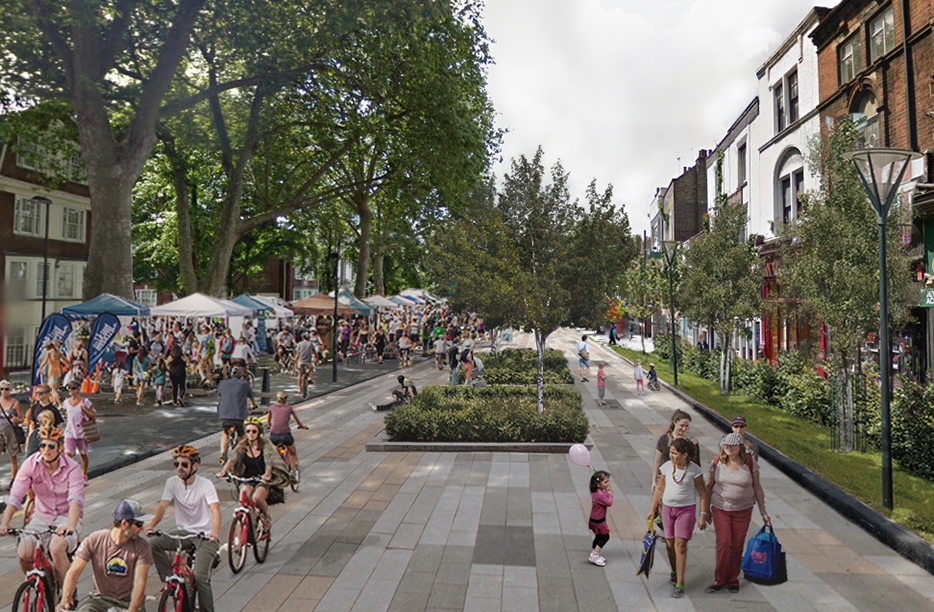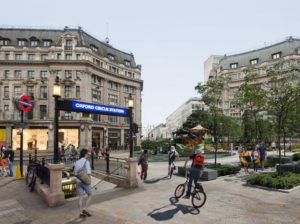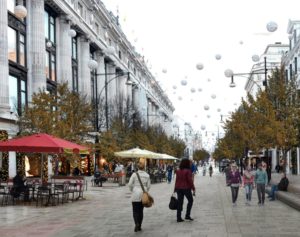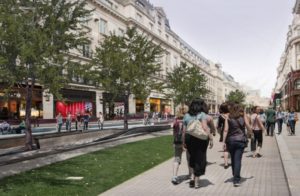Walkable London is a research initiative by Zaha Hadid Architects that proposes a full-scale network of pedestrian routes across the British capital.
Pedestrianising just a few streets has a limited impact on improving traffic congestion, pollution, safety and public health. To make walking part of our daily routine, London needs an integrated pedestrian network as part of the city’s transport infrastructure.
The UK capital has some great examples of pedestrianisation revitalising individual districts. Walkable London presents tangible strategies to connect these disparate pedestrianised zones.
London’s Trafalgar Square experienced a 300% increase in visitors after the pedestrianisation of its North Terrace. Temporary Sunday closures to traffic on Regent Street results in a 57% increase in footfall. Globally, commercial activity increases by an average of 30% following the pedestrianisation of a street or district.
On average, Londoners spent more than 100 hours per year stuck in traffic, costing the city’s economy £6.2bn (£1,911 per person) annually, while over 90% of air pollution in cities is caused by vehicle emissions.
Walking just 20 minutes a day lowers the risk of heart disease, the major cause of premature death in the UK, by 30%.
More than 40% of Londoners do not achieve the recommended 150 minutes of activity a week, contributing to the costs of illnesses derived from physical inactivity estimated at £12.6 per annum (8.3% of the UK’s national health spending).
Increasing the density of the city’s residential neighbourhoods, through adaptive reuse and retrofit as well as the infill of disused lots, may not appear to be part of the city’s transport strategy, yet it addresses key issues of housing, transportation and community development.
Studies conclude that every 10 minutes of commuting reduces community involvement by 10%. Increasing opportunities for Londoners to live within walking distance of their work also increases their opportunities to interact with their community–an important factor of our well-being and happiness.
Developing London’s pedestrian-friendly environment will involve a wide variety of transformations—there is no one-size-fits-all answer. Careful analysis, engagement and support is required to develop the best solutions for each community.
London was traditionally a walking city. Walkable London presents proposals that re-introduce walking as an integral part of the city’s transport network.
Featured image is Upper Street. All images courtesy of Zaha Hadid Architects.




